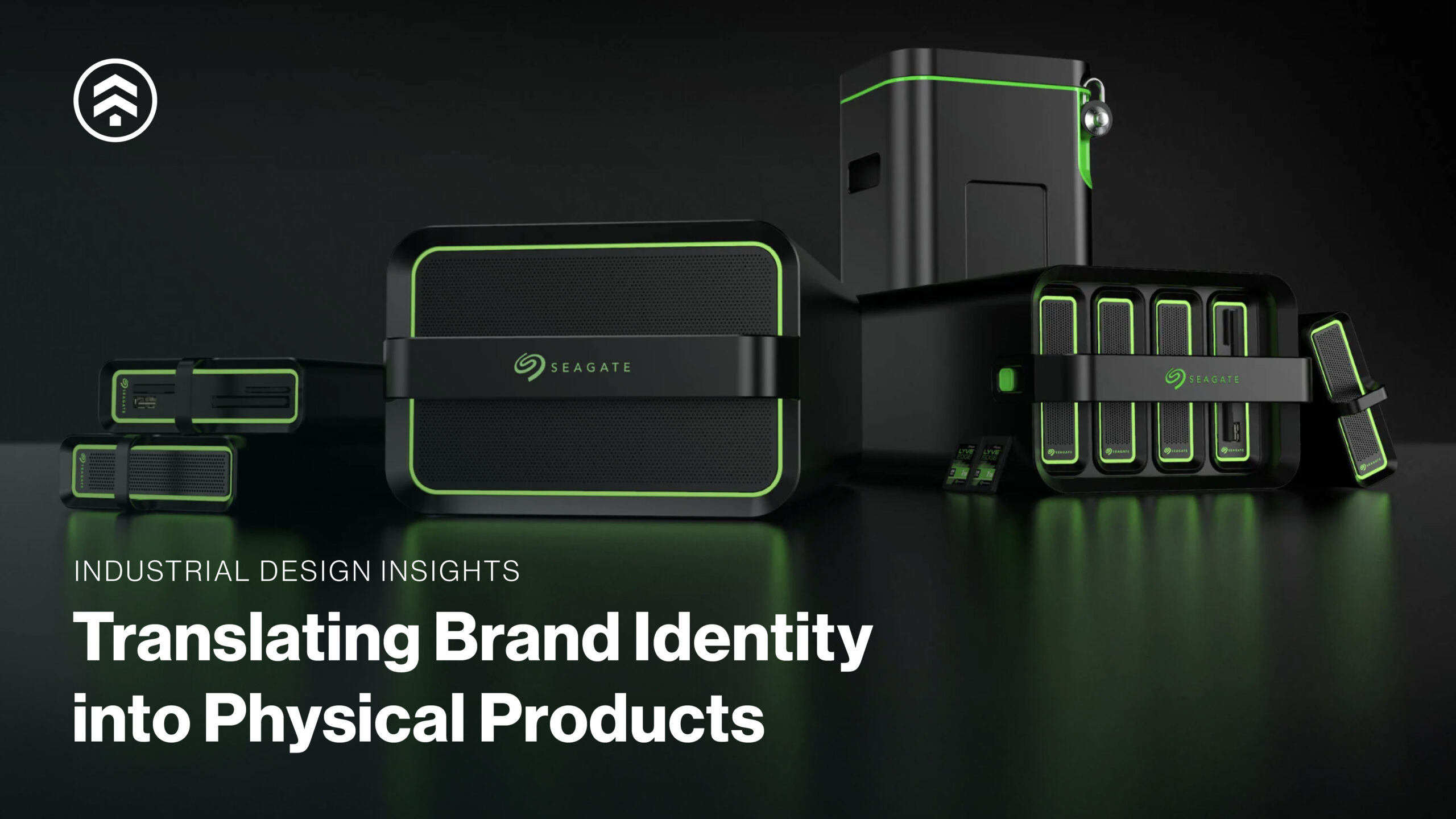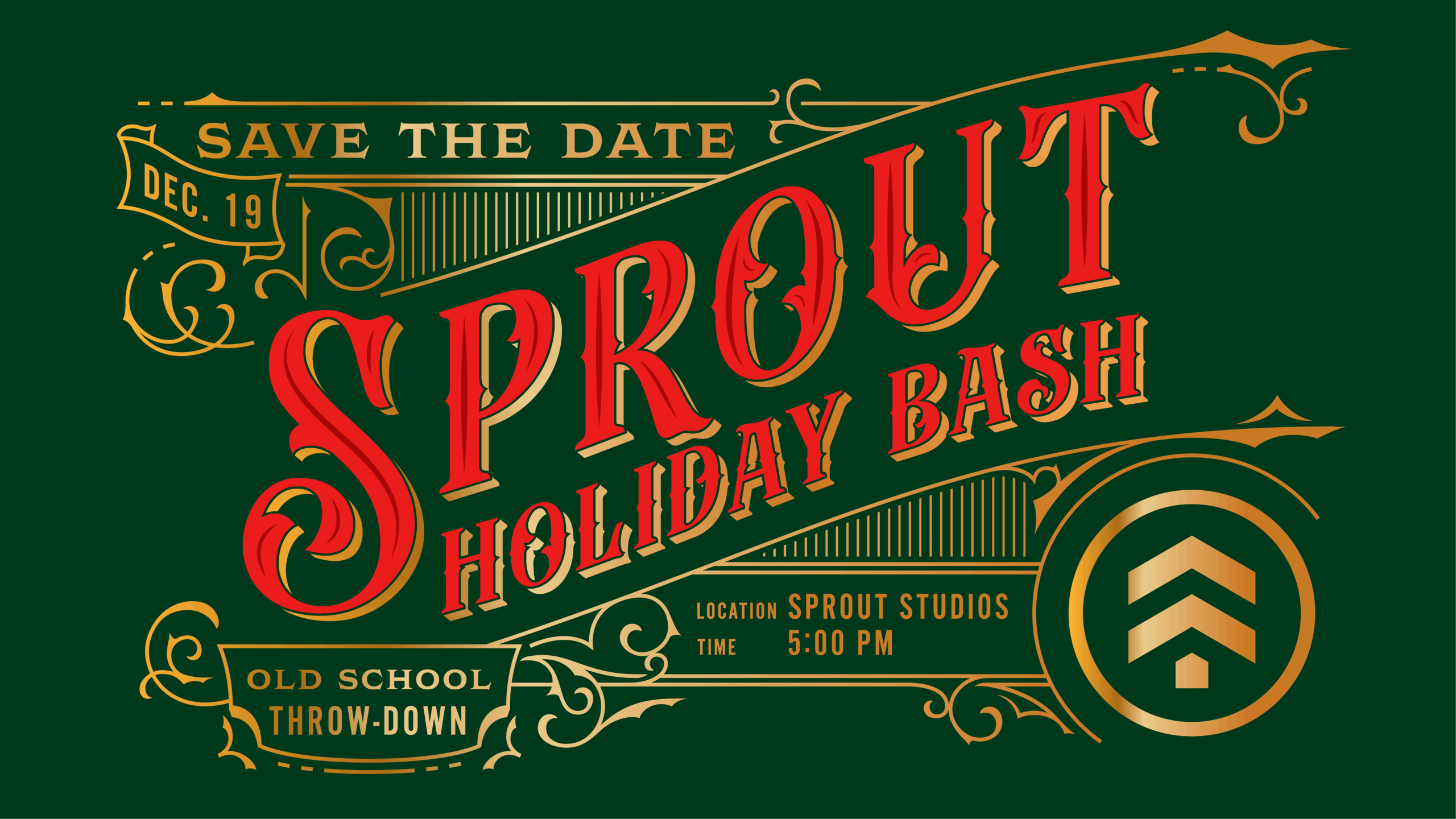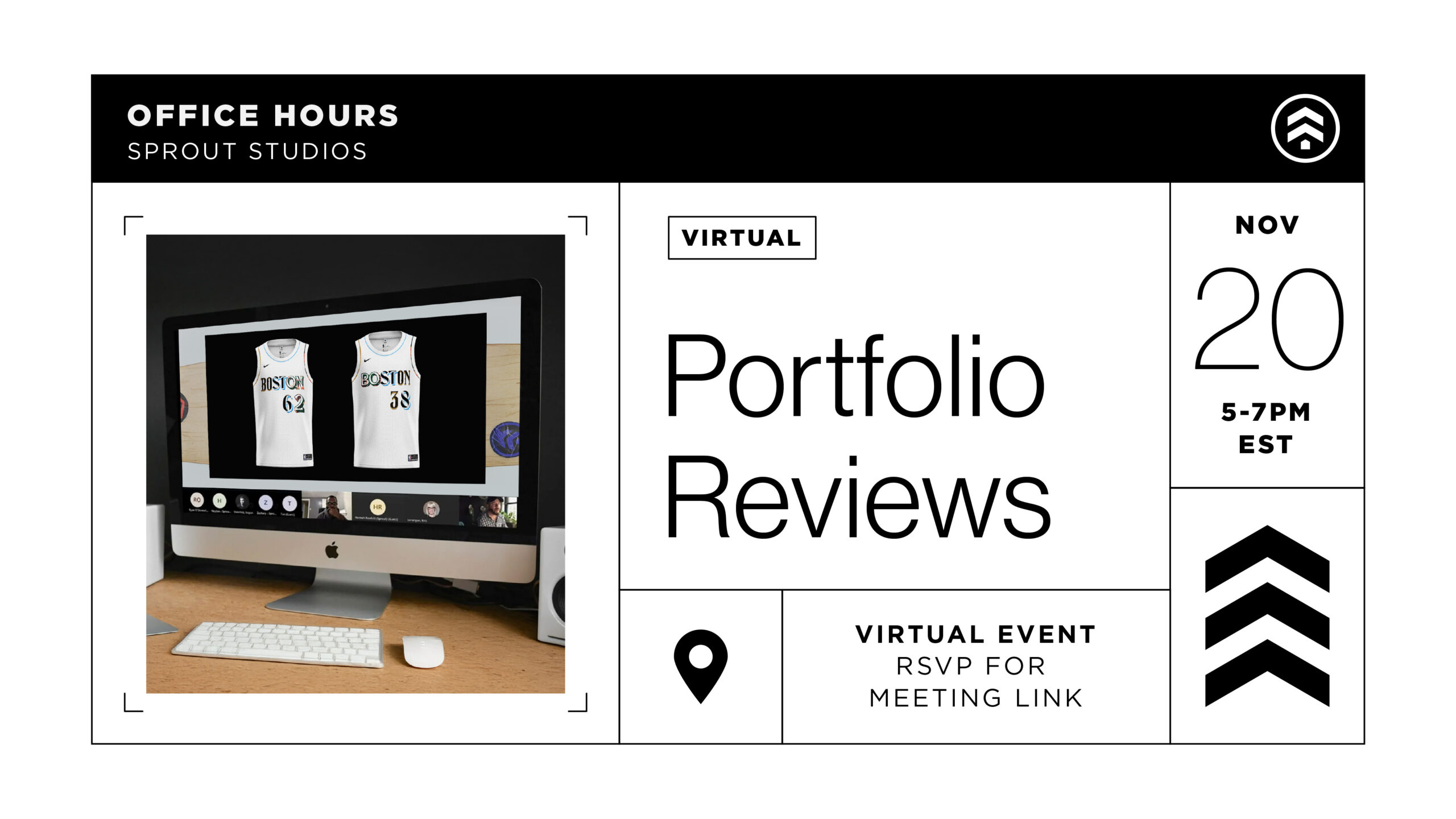Visual Brand Language (VBL) is where design meets identity. It’s the strategic fusion of color, material, finish, form, and detail that transforms individual products into a unified brand experience. When executed thoughtfully, VBL creates products that are instantly recognizable, communicate your brand’s values, and foster deeper connections with customers. This powerful design approach ensures every product tells the same story—one that resonates clearly and consistently across markets and touchpoints.
As a product design firm, Sprout Studios specializes in developing VBL strategies that help brands stand out and build lasting recognition. In this blog, we explore how design elements converge to create products that don’t just look good but become iconic extensions of your brand’s identity.
Designing Brand Recognition Through Product Form
Visual Brand Language (VBL) is the deliberate and strategic use of visual and tactile design elements that reflect a brand’s personality, values, and promises. While traditional branding centers on logos and messaging, VBL comes to life through the physical product itself — expressed in its shape, color, textures, and finishing details.
Our approach as an industrial design studio starts with deep collaboration and immersive research. We dive into your brand’s story, values, and market position to uncover the essence that should be expressed physically. Our industrial design team then develops a cohesive design system that integrates form, color, material, finish, and detail with intention—ensuring each product feels like a natural and authentic extension of your brand family.
A successful VBL strategy goes beyond surface aesthetics. It’s about forging meaningful connections and crafting familiarity through intentional design. By balancing innovation with brand consistency, we ensure that while each product serves a unique function, they all speak the same visual language.
This strategic approach is what elevates individual products into a powerful, unified brand experience.
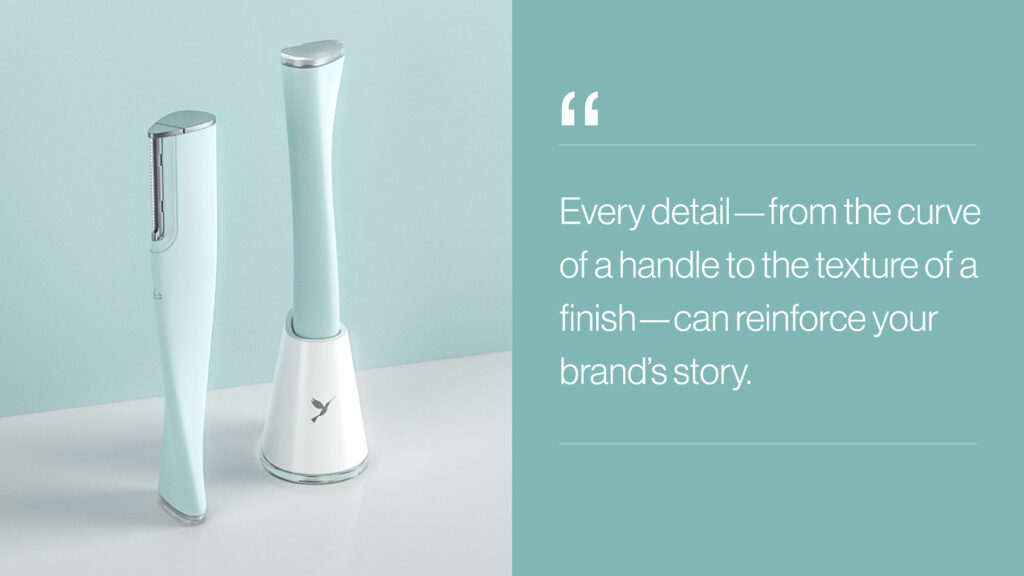
The Core Components of Visual Brand Language in Product Design
A strong VBL is a complete design system made up of interrelated elements that work together to communicate a brand’s identity. Each component plays a strategic role in shaping how a product looks, feels, and is perceived in the real world.
Form and Proportion: The foundational shape and geometry of a product establish its personality. Soft, rounded forms may suggest approachability and warmth, while sharp, angular edges convey precision or performance. Proportion—how different elements relate in scale—can signal luxury, utility, or speed. These choices are critical in ensuring brand consistency across product lines.
Linework and Surface Transitions: Details like chamfers, bevels, edge radii, and surface intersections guide the eye and influence the tactile experience. These elements can express everything from technical sophistication to organic simplicity. The way surfaces transition or break is a subtle yet powerful tool to distinguish a brand’s design language.
Color, Material, and Finish (CMF): CMF decisions evoke emotion, guide perception, and play a pivotal role in brand recognition. A signature palette or finish—matte versus gloss, metallic versus soft-touch—can define an entire brand. CMF isn’t just decorative; it supports function (e.g., grip, temperature control) and enhances storytelling through texture and tone.
Graphic Elements and Typography: Integrated graphics—whether through screen printing, embossing, or digital displays—reinforce branding when done with intention. Typography, iconography, and labeling should complement the product’s physical form and reflect the tone of the brand: bold and modern, minimal and refined, or technical and utilitarian.
Interaction Cues: How users engage with a product—buttons, handles, hinges, touch points—should also reflect the brand’s design principles. Clear, intuitive interaction design elevates usability while reinforcing trust. These physical cues become part of the brand’s language, especially when repeated across multiple touchpoints.
Lighting and Display Integration: For smart products and electronics, lighting patterns, screen layouts, and animations are increasingly important in expressing brand identity. These dynamic elements must harmonize with static physical design to present a cohesive whole.
Product Architecture and Modularity: Consistent internal architecture and modular components can enhance brand scalability and production efficiency. Whether it’s swappable parts or a common internal chassis used across product families, structural consistency contributes to a unified VBL.
Together, these components create a visual and tactile vocabulary that users begin to recognize and trust. Each of these building blocks should be considered when designing products, ensuring that every decision—from the curve of a handle to the placement of a logo—reinforces a clear and compelling brand identity. When repeated with intention, they create a recognizable language that customers begin to associate with your products—and your promise.
As a product design studio, we ensure every one of these details aligns with the broader goals of your brand’s visual identity.
Bringing Visual Brand Language to Life Across Product Portfolios
Bringing a Visual Brand Language to life requires more than a design manual—it demands cross-functional collaboration and an iterative process that connects strategy to execution.
Building the Design System: Once the foundational VBL elements are defined, we build out a full design system tailored to the brand’s goals, category, and user experience. This system includes comprehensive guidelines that govern form, proportion, CMF, and key visual details. Successful implementation hinges on cross-functional alignment—VBL is only as strong as the teams who bring it to life. Involving marketing, brand, engineering, and product stakeholders early and often ensures that design intent is preserved and executed consistently across every touchpoint.
Designing Across Product Families: A strong VBL allows for both consistency and flexibility. Whether we’re designing an entire product line or a single hero SKU, we ensure each item feels unique in function but unmistakably part of a larger brand family. We consider product hierarchy, use cases, and customer interaction to fine-tune where elements should repeat and where variation adds value—guided by clear, repeatable design principles.
Prototyping and Refinement: Designing with VBL in mind doesn’t mean locking into a single solution. We prototype early and often—evaluating form, materials, interaction, and finish in real-world context. Testing with users allows us to validate the balance between brand expression and usability, and iterate toward the most emotionally resonant solution.
Manufacturing with Intent: Even the most well-crafted VBL can fall apart without executional alignment. That’s why we partner closely with engineering and manufacturing teams to carry the vision through production. We define tolerances, specify finishes, and ensure the smallest design cues aren’t lost during scale-up.
Future-Proofing the Brand: Design languages aren’t static. As brands evolve, so must their product expressions. We create systems that are adaptable—ready to expand into new product categories, technologies, or markets without losing their identity. This kind of forward-thinking VBL design sets the foundation for long-term brand equity and recognition.
As an industrial design firm, Sprout helps brands carry their product design strategies into future growth and evolution.
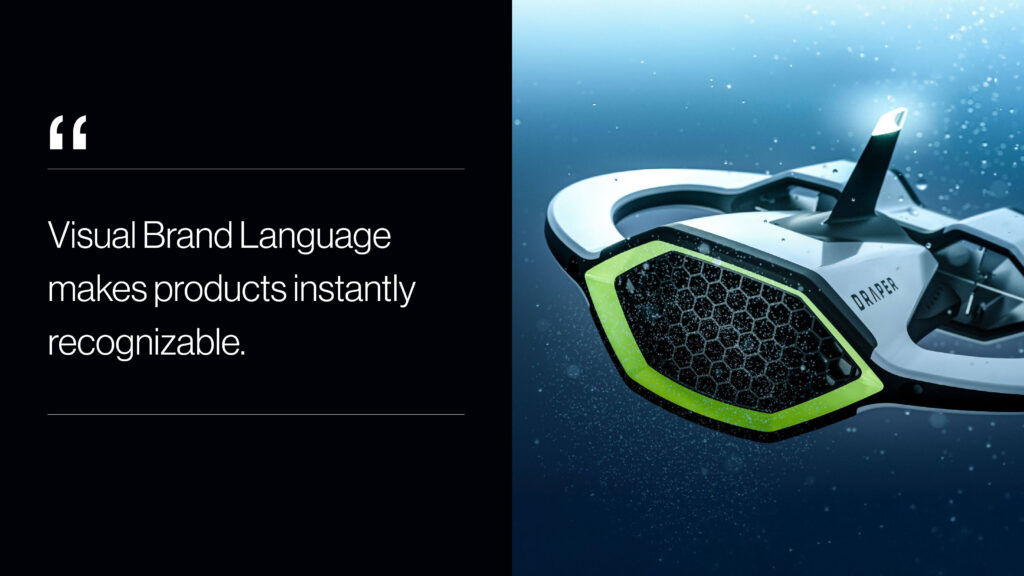
Product Design Case Study: Sprout Studios x Draper
Draper, a Boston-based R&D powerhouse, pioneers technologies across space exploration, national defense, and healthcare. They engaged Sprout Studios to develop physical forms for three breakthrough concepts—unified under a new, future-facing Visual Brand Language.
Our product design team collaborated closely with Draper to translate each technology into a compelling physical product, while aligning with a shared brand identity rooted in trust, precision, and innovation.
- Microplastics Sensing UAV: Designed with enclosed thrusters for environmental sensitivity, this autonomous underwater drone maps microplastic contamination and transmits heat maps to the EPA. Its form conveys intelligence and ecological purpose.
- Mobile Thermoelectric Refrigerator: Engineered for global use in rugged conditions, this off-grid refrigerator pairs performance with a protective, robust exterior. Its design reflects durability, efficiency, and humanitarian impact.
- Immunotherapy Bioprocessing Device: A compact, user-friendly system for CAR-T cell therapy. We prioritized intuitive ergonomics and clean, clinical detailing to reflect the high-tech, life-saving nature of the process—while ensuring usability in lab environments.
These three products went on to earn significant acclaim, including placements on Fast Company’s World-Changing Ideas and TIME Magazine’s Best Inventions lists.
Following this success, our industrial design studio partnered with Draper to scale their VBL across future initiatives—hosting internal workshops and creating a comprehensive design system to ensure cohesive, future-ready execution.
Partner With Sprout to Build a Signature Look That Scales
When Visual Brand Language is executed well, it becomes more than a toolkit—it becomes a signature. Over time, customers begin to recognize your brand before they even see the logo. The silhouette of a product, the tactile feel of a finish, or the interaction pattern of a button can all signal that it belongs to your brand. That kind of recognition isn’t built overnight—it’s earned through consistency, intentionality, and great design.
As a product design studio with decades of experience, Sprout Studios can help you define, develop, and deploy a distinctive Visual Brand Language that transforms how your brand shows up in the world. Your brand has a story—let’s design the products that tell it. Click here to reach out to our industrial design team.
